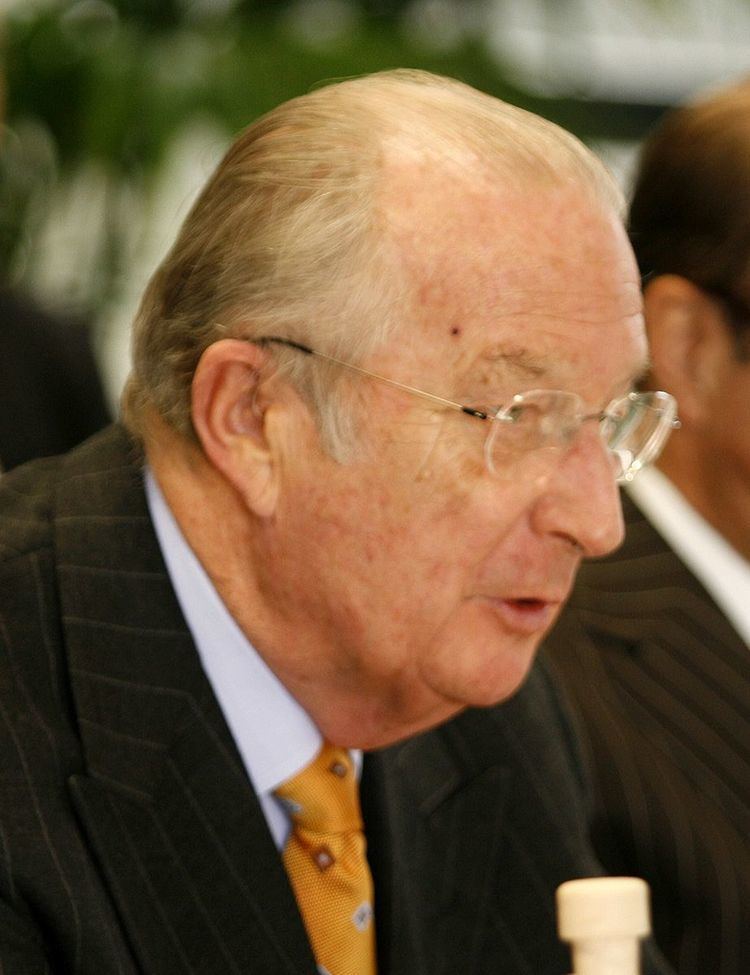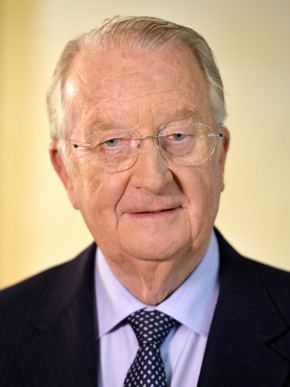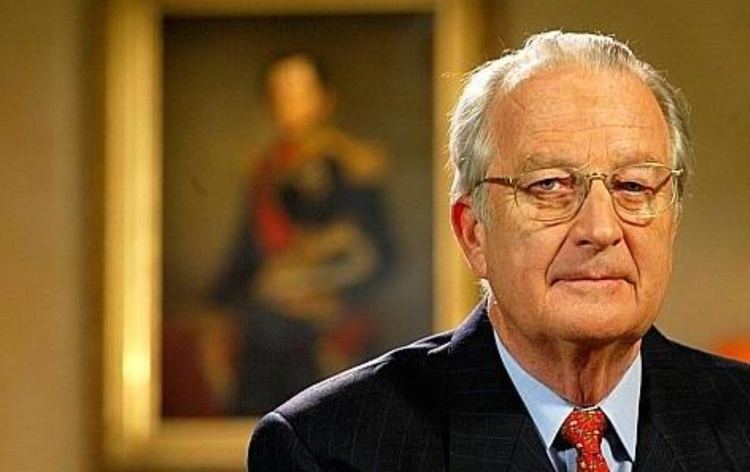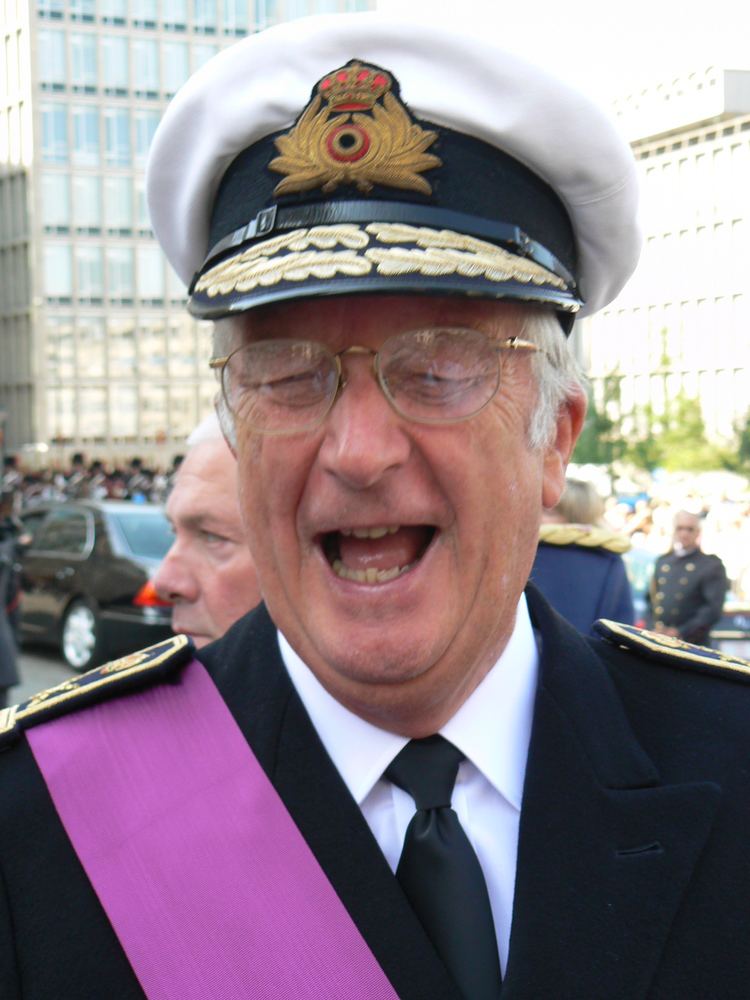Predecessor Baudouin | Name Albert of | |
 | ||
Reign 9 August 1993 – 21 July 2013 Prime Ministers See listJean-Luc DehaeneGuy VerhofstadtYves LetermeHerman Van RompuyYves LetermeElio Di Rupo Role Former King of the Belgians Children Philippe of Belgium, Princess Astrid of Belgium, Archduchess of Austria-Este, Prince Laurent of Belgium Siblings Baudouin of Belgium, Princess Josephine Charlotte of Belgium, Prince Alexander of Belgium Parents Astrid of Sweden, Leopold III of Belgium Grandchildren Princess Elisabeth, Duchess of Brabant Similar People Queen Paola of Belgium, Philippe of Belgium, Baudouin of Belgium, Queen Mathilde of Belgium, Princess Astrid of Belgium | ||
Albert ii of belgium
Albert II (born 6 June 1934) reigned as the sixth King of the Belgians from 1993 until his abdication in 2013.
Contents
- Albert ii of belgium
- Early years
- Marriage and family
- Official role
- Abdication
- Titles
- Belgian honours
- Foreign honours
- Dynastic honours
- Honorary degrees
- Eponiem
- References

King Albert II is the son of King Leopold III and Queen Astrid, born princess of Sweden. He is the younger brother of the Grand Duchess Joséphine Charlotte of Luxembourg and King Baudouin, whom he succeeded upon Baudouin's death in 1993. He is currently the last child of Leopold III and Astrid still alive. He married Donna Paola Ruffo di Calabria (now Queen Paola), with whom he had three children. Albert's elder son, Philippe, is the current King of the Belgians.

On 3 July 2013, King Albert II attended a midday session of the Belgian cabinet. He then announced that, on 21 July, Belgian National Day, he would abdicate the throne for health reasons. He was succeeded by his son Philippe on 21 July 2013. Albert II was the fourth monarch to abdicate in 2013, following Pope Benedict XVI, Queen Beatrix of the Netherlands, and Emir Hamad bin Khalifa of Qatar. In so doing, he was also the second Belgian monarch to abdicate, following his father Leopold III who abdicated in 1951, albeit under very different circumstances.

Early years

Prince Albert was born in Stuyvenberg Castle, Brussels, as the second son and youngest child of King Leopold III and his first wife, Princess Astrid of Sweden. He was third in line to the throne at birth, and was given the title Prince of Liège. Queen Astrid died in a car accident in August 1935, in which King Leopold was lightly injured but survived. The King remarried to Lilian Baels in 1941, a union that produced three more children: Prince Alexander, Princess Marie-Christine and Princess Marie-Esméralda.

During World War II, on 10 May 1940, at the time when Belgium was being invaded, Prince Albert, his elder sister Princess Joséphine-Charlotte and his elder brother Prince Baudouin, left the country for France and later Spain. The Prince and the Princess returned to Belgium on 2 August 1940. They continued their studies until 1944, either at Laeken, or at the Castle of Ciergnon in the Ardennes. In June 1944, at the time of the Allied landings, King Leopold, his wife Princess Lilian and the royal children were deported by the Germans to Hirschstein, Germany, and later to Strobl, Austria, where they were liberated by the American Army on 7 May 1945. Owing to the political situation in Belgium, King Leopold and his family moved to the villa "Le Reposoir" in Pregny, Switzerland, when they left Austria in October 1945 and stayed until July 1950. During that time, Prince Albert would continue his education in a secondary school in Geneva. King Leopold III, accompanied by Prince Baudouin and Prince Albert, returned to Belgium on 22 July 1950.
Marriage and family
In 1958, Albert went to the Vatican to witness the coronation of Pope John XXIII. At a reception at the Belgian Embassy, he met Italian Donna Paola Ruffo di Calabria. “We were both shy, so we only talked a little,” Paola said later about their first meeting. Shy but smitten, Prince Albert proposed marriage to her, to which she accepted. Two months after their meeting, the prince introduced his future wife to his family, and four months later to the press. Upon arriving in Brussels for the first time before her wedding, Donna Paola won over the Belgian media immediately.
The couple, supported by both families, intended to marry at the Vatican. However, the Belgian government disagreed as they felt the Belgian people should not be denied the opportunity to celebrate a royal wedding, particularly after a difficult decade post-war. The Pope, after some diplomatic pressure, refused them a marriage at the Vatican, saying he would understand if the couple would want to get married amidst their people.
The couple married on 2 July 1959 and have three children, two sons and a daughter, twelve grandchildren and one great-grandchild:
Since 1999, the media have claimed that the Belgian sculptor Delphine Boël (born in 1968) is King Albert II's extramarital daughter. In June 2013, Boël summoned the then King, the then Duke of Brabant and the Archduchess of Austria-Este to appear in court. She hoped to use DNA tests to prove that she is the King's daughter. As the King enjoyed complete immunity under the law, Boël decided to summon his elder children as well. After the King's abdication, she abandoned her first suit to introduce a second one only against the King as he was no longer protected by immunity and the first claim would have been judged according to the situation at the time of the introduction of the claim. In March 2017, the Court ruled that her claim was unfounded, and her lawyers said she would take the claim to appeal.
Official role
As the younger brother of King Baudouin, Prince Albert was the heir-presumptive to the throne. However, his son Prince Philippe was groomed to be Baudoin's successor, once it became clear that the King would have no children to succeed him. Despite this, on Baudouin's death (at age 62), Albert was sworn in before parliament, on 9 August 1993, as the sixth King of the Belgians.
As King, Albert's duties included representing Belgium at home and abroad on state visits, trade missions, and at high level international meetings as well as taking an interest in Belgian society, culture and enterprise.
In 1984, he set up the Prince Albert Foundation, to promote expertise in foreign trade.
The King had a constitutional role which came into play in 2010–2011 when Belgium's parliament was unable to agree on a government. When the crisis was resolved, Albert swore in the new government.
In January 2012, Albert announced that the royal family would freeze their allowances and use a greater proportion of their income to maintain the royal palaces.
Albert sparked controversy in his December 2012 Christmas speech by comparing modern "populist movements" with those of the 1930s. This was seen by several political commentators, as well as many Flemish politicians, as aimed implicitly at the large Flemish nationalist party, the N-VA. Bart De Wever, the party's leader, called for the King's role in the formation of Belgian governments to be changed in the wake of this comment since he "could no longer see the monarch as playing the constitutional role of referee."
Abdication
On 3 July 2013, 79-year-old King Albert II attended a midday session of the Belgian cabinet, where he revealed his intention to abdicate to Prime Minister Elio Di Rupo and to the Deputy Prime Ministers. According to a letter sent by the King to the Prime Minister and dated 3 July 2013, and which was made public, the King had already broached the topic of his intention to abdicate several times with the Prime Minister, who had asked him to reconsider it. At 6 PM (CET) the King announced in a recorded radio and television speech that on 21 July, Belgium's National Day, he would abdicate the throne for health reasons. He was succeeded by his son, Philippe. Albert II retained the title of King after the abdication, and has since been styled as His Majesty King Albert II of Belgium.
Titles
After his abdication on 21 July 2013 it was decided that he would be styled as His Majesty King Albert II, the same form of address granted to his father, Leopold III, after his abdication.
Belgian honours
Foreign honours
Dynastic honours
Honorary degrees
King Albert II is Doctor Honoris Causa of:
